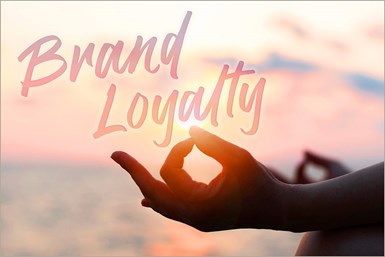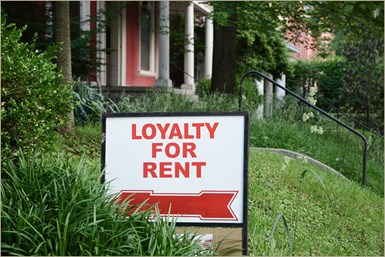Brand Insistence Vs. Brand Loyalty
While it may be difficult to determine if you have achieved true, valuable brand loyalty, it is not impossible. Here’s a look at an important issue in terms of achieving true brand value.
#brandbuilding
It’s More Than Symantics
Part 1 of a 3-Part Series
By Mitchell Goozé, Principal
Customer Manufacturing Group

Brand loyalty: The illusive nirvana for brand marketers. How do you achieve it? Can you know it if you have it? How do you keep it? While this paper is not long enough to answer all of those questions (assuming it is even possible), it does take a look at an important issue in terms of achieving true brand value. While it may be difficult to determine if you have achieved true, valuable brand loyalty, it is not impossible. For a higher probability of success, we suggest an alternative focus.
For some time pundits have suggested we should strive for brand loyalty in order to achieve higher brand profitability and brand "value." The reasoning behind this suggestion is the belief that satisfied customers leave (which is true), but loyal customers are not likely to be moved to a competitive product or service.
While this second statement may be suspect, loyalty and brand profitability have been positively linked. So given that brand loyalty is profitable, how do you achieve it? And, is brand loyalty sufficient?
The Random House Dictionary defines loyal as: "faithful to one's allegiance." Since "faithfulness" can be difficult to measure, in an effort to more easily measure "loyalty," some marketing practitioners have attempted to equate purchase persistence with brand loyalty. This equivalence (despite dictionary differences) may or may not be true, and will be discussed later in this article.
The value of using persistence as the measurement (assuming it can be equated with loyalty) is that the purchase behavior from persistence is quantifiable. Alternatively, if persistence cannot be equated to loyalty, then, since the above Random House definition of loyalty is clearly attitudinal, loyalty is possibly more difficult to measure.
Loyalty, Insistence and Persistence
To further complicate matters, recently some practitioners have begun using the term brand insistence to substitute for brand loyalty. Are the two concepts identical? Could insistence substitute for persistence and then for loyalty? We think not.
While insistence and persistence are not necessarily the same thing, loyalty and insistence are also not the same. In fact, we argue that loyal customers may be less active and engaged with the brand than insistent customers are. The importance of this distinction will be made clear.
Again, the Random House Dictionary defines the verb insist: To be emphatic, firm or resolute on some matter or to persist in demanding. To be brand insistent is therefore to be "emphatic in demanding a specific brand." Being faithful (loyal) while not necessarily passive can be just a passive exercise.
For example, "If they don't have my brand, I'll do without." Being insistent is active: "If they don't have my brand, I'll demand they get it, may search elsewhere, but I will take overt action to get what I insist upon." To be insistent implies that I will persist in demanding you provide the brand I want, and/or I will shop elsewhere, and I will not buy anything else in the meantime.
This could also imply that persistence and insistence are potentially identical. As will be shown shortly, persistence is necessary but not sufficient to create insistence. This difference is critically important. Persistent behavior on the part of brand buyers can be acquired without brand loyalty or insistence. And that is a critical profitability difference.
This may all seem an exercise in splitting hairs over "definitions." However, we believe that there are critical and important differences in customer behavior and brand profitability as a result of what may appear to be quibbling over definitions.
One of the complications to finding actionable value in all of this is determining what it is customers are loyal to or insistent upon. Some marketers believe they can "buy" loyalty. We suggest that in reality an attempt to buy loyalty really only results in that "loyalty" being rented. That is, it is fleeting.

Is the loyalty you perceive that your customers have really only "rented" (persistent purchase behavior induced by coupons, specials, or frequent buyer programs which ceases when the "rental payments" cease for example), or is it truly persistent based on inherent "values" contained within the brand to which the customers are loyal or insistent?
It is unlikely that insistence can be "rented" at an economically reasonable cost. Perhaps another way of looking at this is to consider that an insistent customer virtually always buys your brand (even if it means going out of their way). A merely loyal customer won't necessarily act that way. Further, if their loyalty was simply "rented," customers may, in fact, appear to have switched allegiance away from your brand and become "loyal" to another simply based on another brand's temporary "purchase" (rental) of what appears to be the customer's loyalty.
In truth no one has earned the customer's loyalty, much less insistence. The apparent loyalty is simply being "rented" by the "high-bidder." Thus measuring persistent purchase behavior alone is insufficient to determine if earned loyalty or insistence was the driver of the observed behavior.
If you want to create sustainable loyalty or insistence that is not based on "rental" fees, then you have to understand what creates loyalty or insistence to a product or service and the brand that represents it. If there were an easy answer to gaining that understanding there would be a lot fewer products and virtually no "me too" products. That being said, while the answer is not easy, it is known.
To understand how brand insistence can be created, we will review some basic elements of brand affinity in Part 2 that will appear in the September 2021 issue.
Need more information?
Mitchell Goozé, Principal
Customer Manufacturing Group
225 Gregorgio Court
Reno, NV 89521
408-987-0140
LinkedIn
800-947-0140
Fax: 408-727-3949
About the Author
Mitchell Goozé
A recognized expert in marketing, innovation and leadership, strategic positioning, and customer relationships, Mitch has addressed groups throughout the world. He is an experienced general manager and leader with operating experience in the high technology and consumer products industries. He has experience running divisions of large companies, as well as being CEO of mid-sized companies. Mr. Goozé was president of Teledyne Components, a division of Teledyne, Inc. for five years.
Mitch is a Certified Speaking Professional (CSP). Vistage, an international organization of CEOs, named him Marketing Resource of the Year. He was named Speaker of the Year 2001 by TEC UK.
Mitch was a major contributor to Future In Sight, (Macmillan, 1995) and has three books on marketing in print. He has been a member of Customer Manufacturing Group since 1991. Customer Manufacturing helps its customers increase marketing/sales performance through process improvement management.
RELATED CONTENT
-
10 Truths About Marketing After the Pandemic
The Covid-19 pandemic upended a marketer’s playbook, challenging the existing rules about customer relationships and building brands. One year in, there’s no going back to the old normal. Here are 10 new marketing truths that reveal the confluence of strategies, operations, and technologies required to drive growth in a post-Covid-19 world.
-
Finding Opportunities in the Chaos
2020 has been a disruptive year, but one that will likely contribute to greater 3D printing adoption and more sustainable manufacturing. Stephanie Hendrixson, Senior Editor for Additive Manufacturing and Co-Host of The Cool Parts Show, writes about accelerating trends in AM and staying flexible in the face of a pandemic.
-
Adopted into Manufacturing
Jeff Norgord, Marketing and Creative Director, Gardner Business Media, discusses his passion for all things design, advertising and manufacturing and how certain mediums were a precursor to his understanding of design that helped grow his fascination with the manufacturing industry. He wanted to learn how to create and build magazines. And that he did.


